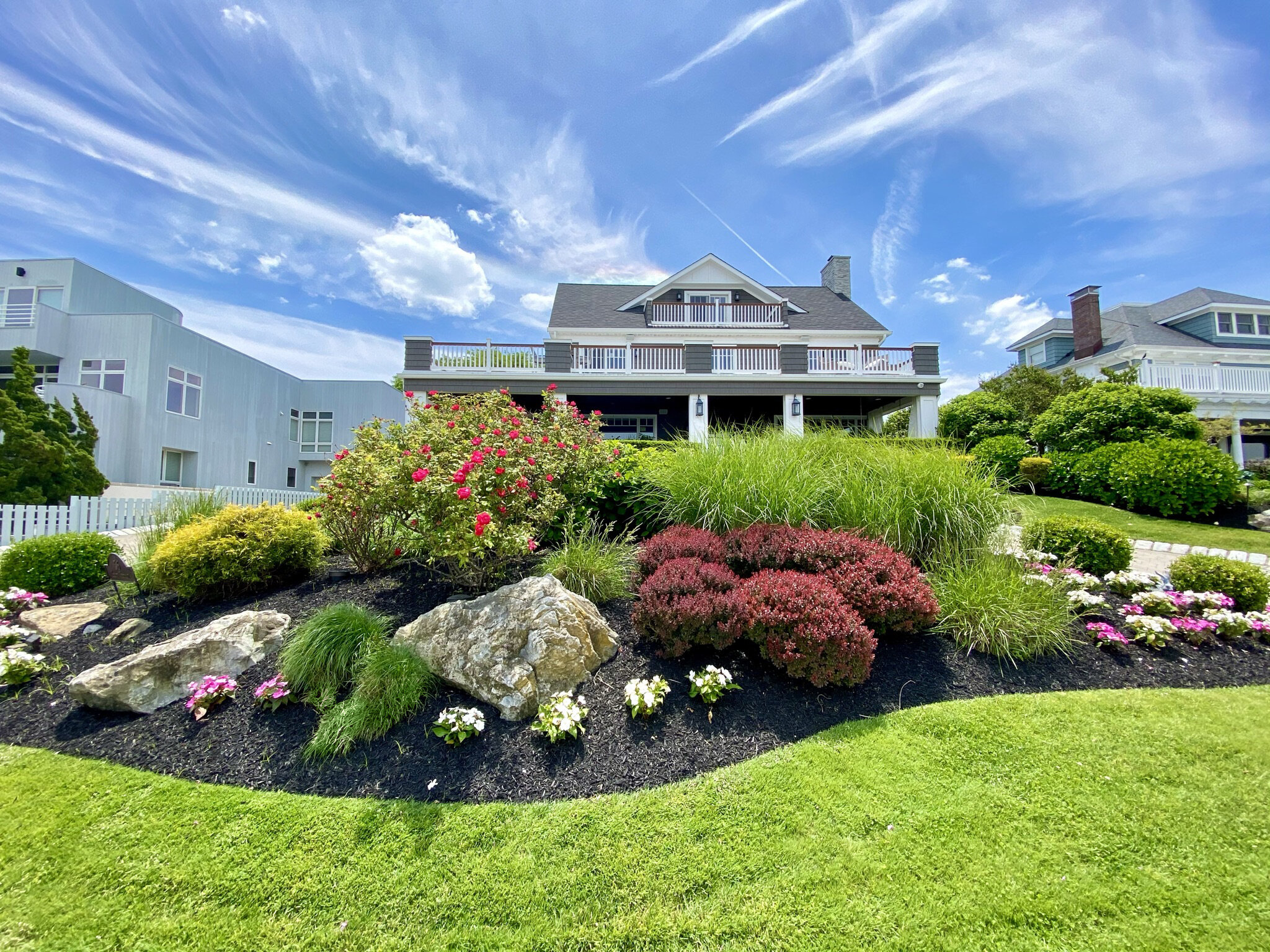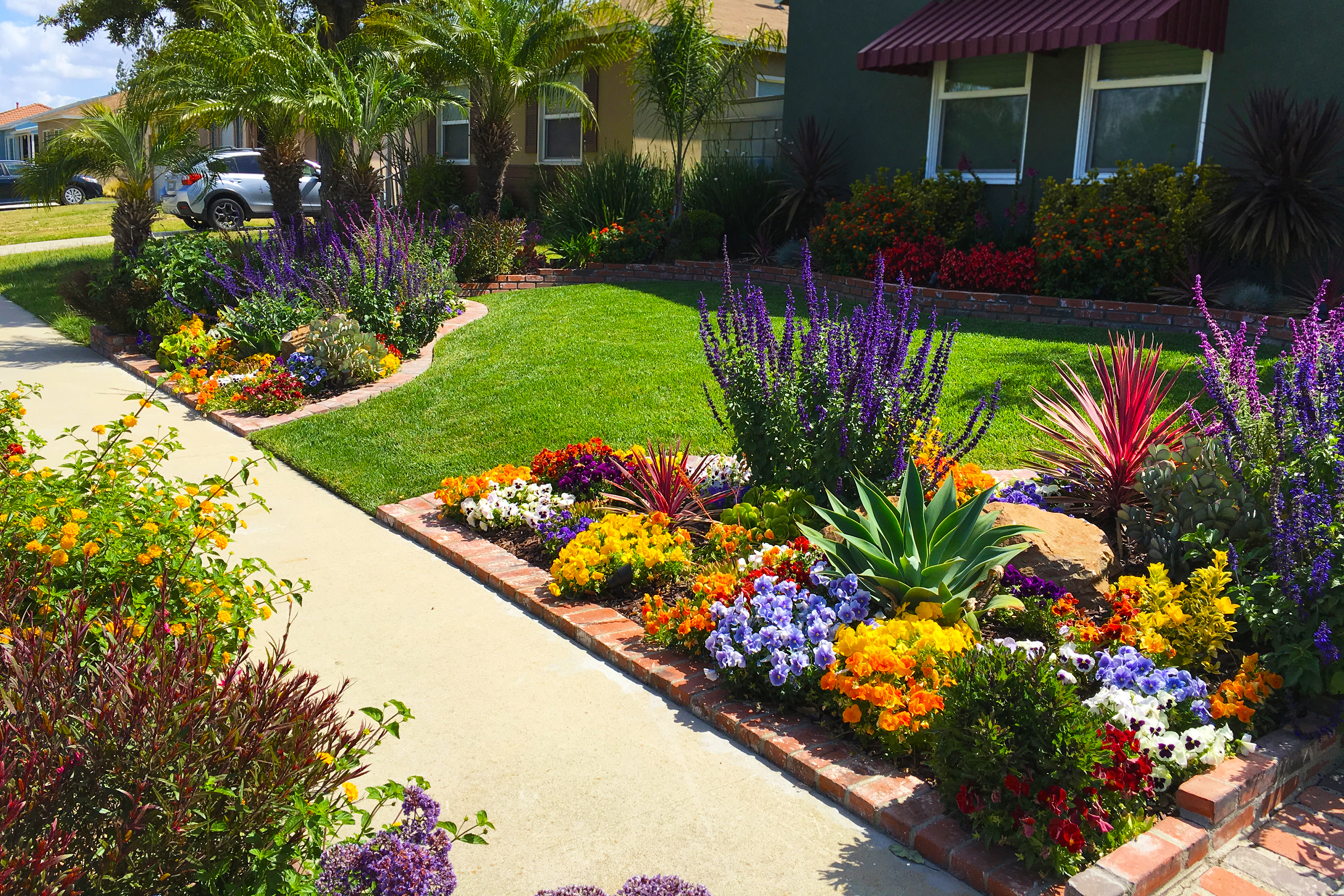Understanding the Different Techniques and Trends in Modern Landscaping for Your Outside Area
In today's quickly developing landscape style market, comprehending the varied methods and patterns can dramatically boost your outdoor area. The shift towards sustainable practices, the integration of clever modern technology, and the surge of minimal looks are reshaping exactly how we perceive and use our yards. By discovering the benefits of indigenous plants and reliable watering systems, one can produce a harmonious environment that is both visually enticing and practical. The question remains: exactly how can these patterns be successfully tailored to meet specific requirements?

Sustainable Landscaping Practices
Sustainable landscape design techniques show an expanding recognition of the ecological impact of traditional landscaping approaches. These techniques prioritize environmental health while enhancing the visual value of outdoor spaces. By incorporating techniques such as soil preservation, water administration, and organic horticulture, lasting landscaping intends to produce an unified balance in between human activity and nature.
One basic principle is the usage of effective watering systems, such as drip irrigation and rain harvesting, which minimize water waste. Furthermore, choosing eco-friendly products for hardscaping reduces dependence on non-renewable sources. Composting natural waste and employing mulching strategies improves soil health and wellness while decreasing the requirement for chemical fertilizers.
Eventually, lasting landscape design not just addresses prompt environmental worries yet also promotes long-lasting eco-friendly sustainability. By taking on these methods, homeowners and landscape specialists can contribute to a healthier planet while enjoying the advantages of wonderfully created exterior rooms.
Incorporating Indigenous Plants
Incorporating native plants into landscaping layouts is a critical technique for improving environmental health and wellness and advertising sustainability. Indigenous plants are adjusted to the regional climate, soil, and wildlife, making them much more resilient and simpler to maintain than non-native species. This adaptability substantially decreases the requirement for pesticides and plant foods, bring about a much healthier setting.
Making use of native plants additionally sustains neighborhood ecosystems by giving essential environments and food resources for pollinators, birds, and various other wild animals. They can efficiently manage stormwater runoff, as their deep origin systems aid to enhance soil framework and rise water absorption. This, consequently, alleviates erosion and decreases the threat of flooding.
When creating a landscape with native plants, it is vital to choose species that are appropriate for the certain conditions of the website, such as sun direct exposure, dirt type, and dampness degrees. Grouping plants with comparable demands not just promotes biodiversity however also improves the aesthetic allure of the outside space. By focusing on native plants, house owners and landscape designers can develop stunning, practical, and environmentally liable landscapes that contribute favorably to the bordering environment.

Smart Technology in Gardening
An expanding variety of home owners and landscape professionals are embracing wise innovation in gardening to improve effectiveness and enhance plant care. Palm Desert Landscaping. This innovative technique integrates advanced tools and systems created to simplify gardening tasks while ensuring much healthier plant development
One of the most preferred clever technologies consists of automated watering systems, which utilize sensing units to keep track of dirt dampness levels. These systems change sprinkling schedules based upon real-time information, protecting against over- or under-watering and preserving water sources. Furthermore, clever garden displays track essential criteria such as temperature level, moisture, and light levels, providing valuable understandings that help garden enthusiasts make educated decisions.
Furthermore, mobile applications currently allow customers to from another location manage gardening tools, get notifies concerning plant health and wellness, and access customized care suggestions. Gardeners can additionally leverage robot mower and weeding tools that operate autonomously, significantly minimizing the time and initiative needed for upkeep.
Outdoor Living Spaces
As house owners increasingly look for to expand their space past the confines of their interiors, exterior living locations have actually gained significant popularity. Palm Desert Landscaping. These areas function as functional environments for leisure, entertainment, and household view it gatherings, transforming typical lawns into practical expansions of the home
Trick components of outside home generally include outdoor patios, decks, and exterior cooking areas. Products such as all-natural stone, wood, and composite decking are often utilized to produce sturdy and aesthetically enticing surface areas that endure the aspects. Furnishings like comfortable seating, dining tables, and fire pits enhance the usability of these areas, allowing house owners to enjoy their outside settings year-round.

Eventually, outside living rooms reflect a desire for connection with nature, promoting a lifestyle that values relaxation, social interaction, and a deeper gratitude for the outdoors.
Minimalist Style Trends
Highlighting simplicity and performance, minimalist style patterns have gained traction in landscaping, matching the more comprehensive building activity in the direction of tidy lines and clean areas. This approach focuses on important elements, minimizing interruptions to create calm and welcoming outside atmospheres. Key features of minimalist landscape design consist of using restricted plant selections, frequently preferring indigenous species that require less upkeep and advertise sustainability.

In addition, minimalist landscaping emphasizes open area, permitting unhampered sights and the smooth combination of outdoor and interior living. Water functions, if included, are usually streamlined and understated, functioning click to read as relaxing focal points without overwhelming the landscape.
Inevitably, minimal style trends in landscape design grow an atmosphere that encourages leisure and mindfulness, making them a significantly prominent choice for homeowners looking for to enhance their exterior rooms with sophistication and simplicity.
Verdict
Outside living rooms, developed with minimal fads, promote relaxation and social communication. Jointly, these practices not only boost the capability of outdoor atmospheres yet additionally foster a harmonious partnership between nature and contemporary living.
In today's quickly evolving landscape style market, understanding the diverse strategies and fads can considerably improve your outside area. Grouping plants with comparable requirements not only advertises biodiversity but additionally improves the visual appeal of the outdoor area.Key parts of exterior living rooms generally include outdoor patios, decks, and outside kitchen areas.Integrating landscape design attributes such as gardens, water aspects, and critical lights can better boost exterior living areas. Outside living areas, made with minimalist patterns, promote relaxation and social interaction.